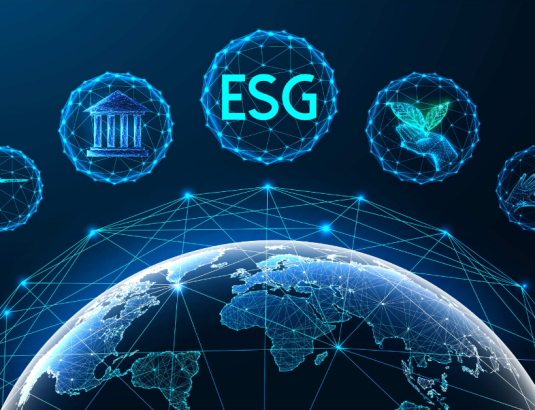


How sustainability trends evolve through the years
The 2024 and beyond sustainability vision is about adaptation and resilience where technology and governance are acting together.
Adaptability and resilience in the light of climate changes
Climate change is presenting a variety of physical risks that are more and more visible, thus, there is now greater emphasis on adaptation and resilience planning. Studies indicate that without the necessary adaptation measures, the global GDP at risk may be 4.4% per year, with developing economies just as likely to be devastated and suffer the consequences. This year, businesses should be proactive, not only in recognizing these risks but taking real tangible actions to minimize their negative impact, especially with the financial implications of climate risk becoming more apparent.
Mandatory disclosure requirements and impact along the value chain
More than a few countries introduced supply chain disclosure standards. Therefore, businesses must measure and manage sustainability issues of their supply chains, e.g. plastic pollution, in the value chains. This task is complex, stressing the need of high-quality data and clear approaches. Following the growing demands for accountability, the trend for holistic reporting on sustainability will only intensify.
The role of technological advancement in sustainability
Employment opportunities are being impacted by the availability of newer technologies such as AI. This trend brings with it a dual challenge: having AI help with sustainability issues simultaneously with the effective governance to avoid any harm or disadvantages. Furthermore, as AI is being used more in sustainability practices, the use of ethical and responsible AI will also be amplified.
Decarbonizing the economy
This race against the clock to switch to a carbon-free economy intensifies beyond doubt. Accordingly, this development is designed to facilitate the GSSSB (global green, social, sustainability, and sustainability-linked bond) to get through the threshold mark of one trillion! With companies and governments setting their strategies with respect to net-zero values, the function of the financial sector of the economy, through provision of innovative financing options that support green initiatives, will assume paramount importance.
Delaying would be a missed opportunity
Although the private sector partially achieves the swing to sustainability by its own initiative, many other stakeholders are not actively participating any further and are awaiting new governmental policies and regulations. This stance is primarily affected by the geopolitical arena, which is constantly changing, the persistent rise of ESG (Environmental, Social, and Governance) issues, and the desire to minimize litigation exposure. Meanwhile, the unquestionable growth of sustainability risk/opportunity concerns reveals that one cannot simply sit out.
Addressing the issue of global warming
In fact, the conjoined challenge of climate emergency and loss of biological diversity draws attention, while the stakeholders urge upon a collective action that is both fair and just at the same time. The conflict between the emergency of the problems and the current speed is the factor that indicates the need of a connected movement to solve the problems in a meaningful way.
The trends considered for the years that we are now heading to demonstrate the actual complexity regarding the obstacles and innovations that will be there. The road to a sustainable future passes through an adjustment to climate risks and the use of technology for the good cause. It is collaboration, innovations, and the undeterred dedication to action which are necessary to tackle the issue.
The situation in Europe
While the European Union’s sustainable finance approach can be seen as a holistic one that draws from various elements, such as the Corporate Sustainability Reporting Directive (CSRD), the EU Taxonomy, and the Sustainable Finance Disclosure Regulation (SFDR), regulation will be the pillar that will assist in the fight for the environment. Their unity, therefore, is like a strong building erected to ensure transparency in the corporate field and guide investments to the environmentally sustainable chapters of the book of thought and innovation. In general, the vision of the EU Taxonomy is what buries the anchor of sustainable economic activity. The framework provides a uniform definition which is used as the base structure to the whole integrated system. Aligning with this baseline, the CSRD prescribes comprehensive sustainability reporting, which determines a company’s disclosures to be in terms of its ESG impacts, accurately and transparently. In the same way, the SFDR is interested in the market of the financial sector as well, whereby the market participants would be obliged to disclose the conformities of their investment products to the criteria of the ESG and hence the investors are raised to the powers of information needed to make the right investment decisions.
Besides the fact that such regulation harmonizing is unambiguously directed at getting rid of greenwashing effects, where companies try to make their reputation seem better while keeping the expenditure of ecological resources minimized, it also helps create an environmentally friendly and transparent place to work. This three-prong approach is a milestone in the EU’s inception of regulations for sustainable finance and corporate social responsibility. A signal for the take-off of global standards in the greening of the global economy.




